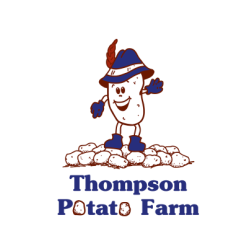The Common-Tater
|
Nothing can compare to farm fresh sweet corn. Our corn is picked daily and is absolutely bursting with flavour. Drop by the farm anytime to pick up your sweet corn and see what other vegetables we have to offer from local farms. You can visit “What We Offer – At The Door” for more information and directions to the farm.
2 Comments
Some would say this addition to The Common-Tater should be called “Weeds & Pests” but I beg to differ. Whether we like it or not, every plant and insect has its place here in our ecosystem on the farm. This collection of photos celebrates entities that are usually ignored, stomped on, swatted at or ripped out of the ground. You be the judge! If you enjoy this slide show, be sure to check out our “Photo Gallery – Abstract Gallery” for more pictures of flora and fauna around the farm.
In an ideal farming world we would receive a gentle rain of about one inch every week. This summer has been unusually dry which means we fall back on Plan B. Irrigation is expensive, labour intensive and exhausting. An additional downfall is we can only irrigate about half of our crops. The rest are not within reach of our pond and so they depend on Mother Nature, and this year they are thirsty.
First we need to lay out the pipes. Every 30 foot pipe is lifted into place and attached together manually. The reel and gun are set into place, and the irrigation line is stretched across the field. As the gun sprays the water across the field, it is slowly pulled back towards the reel. The water pump at the pond is very strong. It can pull the water out of the pond and send it up to a mile away. Once the water reaches the reel it has enough force to shoot out of the gun 150 feet in each direction. This creates a path of 300 feet that is irrigated each time we set up the line. Then the checking and double checking begins. We need to constantly check the spray to make sure there are no unexpected blockages and that the hose is being coiled on the reel properly. As soon as the hose is fully back on the reel we need to stop the irrigation for two reasons. We don’t want to flood the end of the field nor do we want to waste any water. Since irrigation runs 24 hours a day this means interrupted work during the day and interrupted sleep at night. Once the section of the field is irrigated, we rearrange the pipes and start the next section. We irrigate because the alternative is worse. No rain = no crops. Be sure to check out “Spud Smarts – About Growing Potatoes” for more information about how we grow potatoes. Robins are a very common sight in both the country and in the city. Here is a close up look at the robin nestlings that were born on our front porch last week. Both the mother and father fed these three babies every 15 minutes since they were born. Just yesterday they flew out of the nest. Kids grow up so quickly!
It all started with a dry summer and an excavator. We inadvertently created an entirely new ecosystem on the farm when we dug our irrigation pond several years ago. We noticed the fish first. We believe they drifted down the water course or were dropped into the pond by a bird. It’s even possible that fish eggs were dropped into the pond by the birds. Once the fish were naturalized in the pond, the rest of the animals followed quickly.
We have spied all kinds of animals from the smallest of frogs and swallows to the majestic great blue heron and white-tailed deer. It’s one of my favourite places to visit in the evening after a long day at work and it’s a fantastic place for a photo shoot. Be sure to check out our “Photo Gallery – Eye Spy” for more pictures about life on the farm. |
The Common-TaterThompson Potato FarmFarming is fascinating! Archives
July 2024
Categories
All
|
© 2024 Thompson Potato Farm
.







 RSS Feed
RSS Feed





